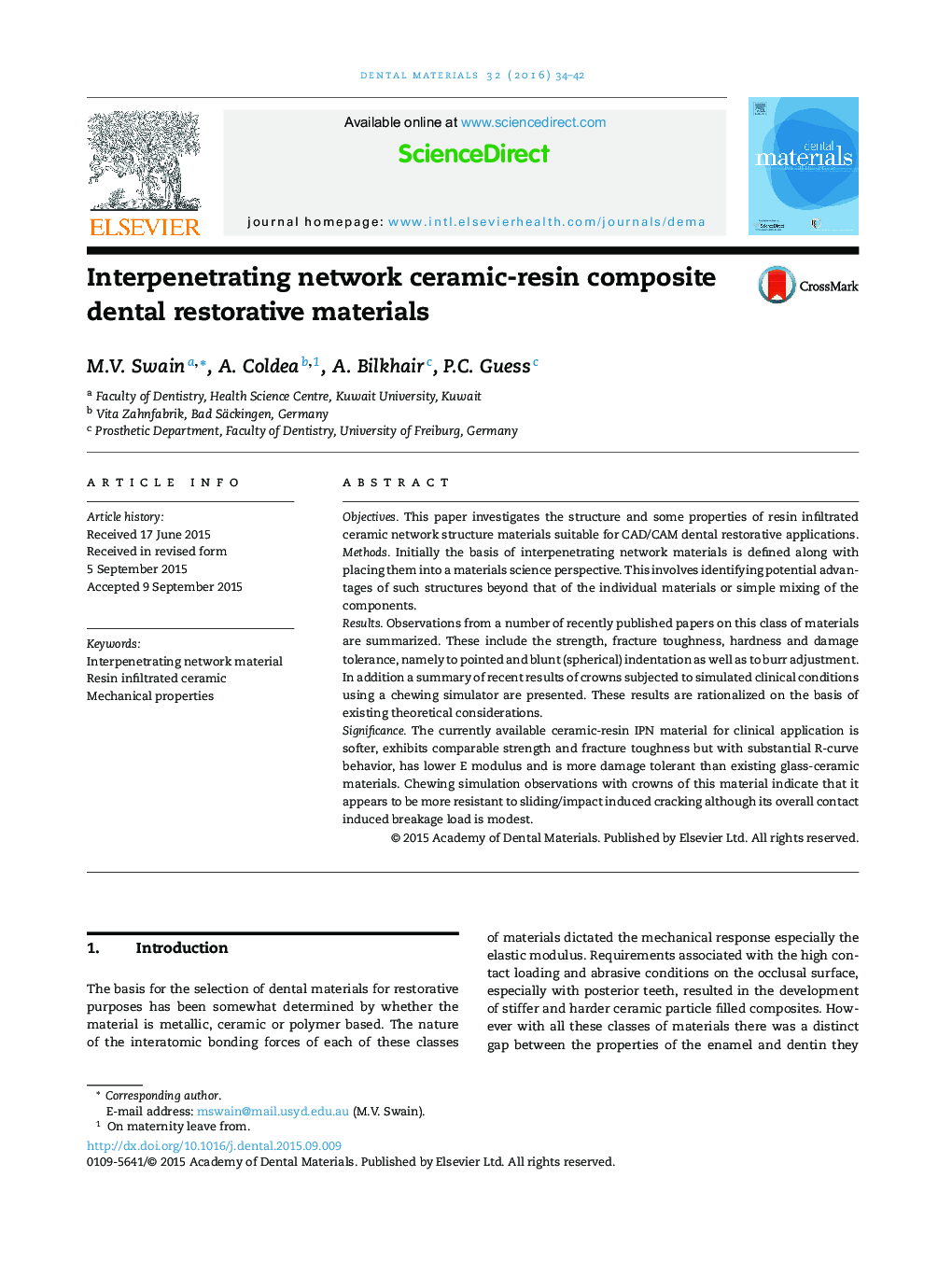| Article ID | Journal | Published Year | Pages | File Type |
|---|---|---|---|---|
| 1420454 | Dental Materials | 2016 | 9 Pages |
ObjectivesThis paper investigates the structure and some properties of resin infiltrated ceramic network structure materials suitable for CAD/CAM dental restorative applications.MethodsInitially the basis of interpenetrating network materials is defined along with placing them into a materials science perspective. This involves identifying potential advantages of such structures beyond that of the individual materials or simple mixing of the components.ResultsObservations from a number of recently published papers on this class of materials are summarized. These include the strength, fracture toughness, hardness and damage tolerance, namely to pointed and blunt (spherical) indentation as well as to burr adjustment. In addition a summary of recent results of crowns subjected to simulated clinical conditions using a chewing simulator are presented. These results are rationalized on the basis of existing theoretical considerations.SignificanceThe currently available ceramic-resin IPN material for clinical application is softer, exhibits comparable strength and fracture toughness but with substantial R-curve behavior, has lower E modulus and is more damage tolerant than existing glass-ceramic materials. Chewing simulation observations with crowns of this material indicate that it appears to be more resistant to sliding/impact induced cracking although its overall contact induced breakage load is modest.
